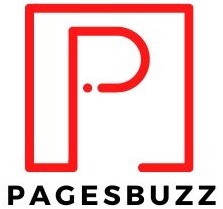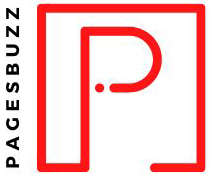10 Performance Max Best Practices Exposed [CHECKLIST]
With machine learning dominating digital marketing in 2025, Google Performance Max campaigns have become essential for maximizing ad reach and efficiency. This guide outlines the best practices to help you harness Google’s advanced AI capabilities for optimized campaigns that deliver results.
What is Google Performance Max in 2025?
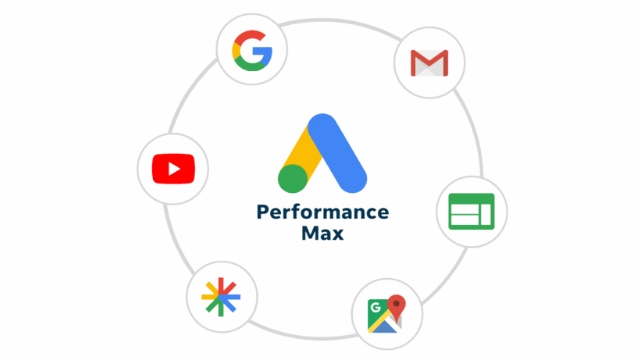
Google Performance Max is an automated ad campaign tool that uses machine learning to optimize ads across Google platforms such as YouTube, Search, Gmail, and Discovery. It ensures that your ad budget targets the right audience at the right time, enhancing conversions efficiently.
Google’s algorithms in 2025 have become more sophisticated, utilizing deep learning models to analyze user behavior, predict trends, and deliver hyper-personalized ads. Performance Max adapts to these rapid changes, offering marketers a competitive edge in the ever-evolving digital landscape.
Why Use Google Performance Max?
With over 10 billion searches processed daily by Google in 2025, Performance Max leverages AI to manage and optimize ad campaigns beyond human capabilities. It ensures maximum performance by displaying ads across multiple channels based on user behavior and trends.
Machine learning ensures that campaigns are adjusted in real time, maximizing engagement and conversions. The integration of AI allows marketers to reach highly targeted audiences with minimal effort, making Performance Max an indispensable tool for digital marketers.
10 Best Practices for Google Performance Max Campaigns
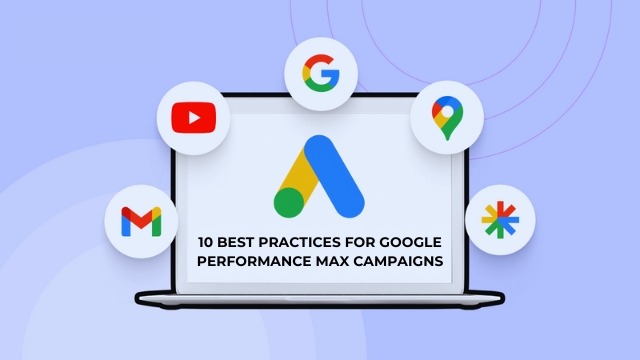
1. Integrate with Existing Search Campaigns
Performance Max complements your existing search campaigns. If a query matches your keyword, the search campaign ad will show. For unmatched queries, Google selects the best ad (Performance Max or Search) based on Ad Rank. This integration ensures comprehensive coverage of search queries, enhancing your ad visibility and reach.
2. Choose the Right Bidding Strategy
- Maximize Conversions: Ideal for driving leads, sign-ups, or calls.
- Maximize Conversion Value: Prioritize high-value actions like lead generation over calls. Selecting the right bidding strategy aligned with your business goals is crucial for campaign success.
3. Leverage Audience Signals
Use Audience Signals such as Customer Match lists to guide Google’s AI towards your target audience. In 2025, audience segmentation is more precise, ensuring faster and more accurate targeting. Incorporate data from CRM systems, website analytics, and customer behavior to refine your audience signals.
4. Utilize Final URL Expansion
This feature dynamically customizes ads based on user queries, choosing the best landing page and generating dynamic headlines and descriptions. Use URL exclusions to control which pages Google can select, ensuring your ads align with your marketing objectives.
5. Provide a Variety of High-Quality Assets
Include at least:
- 5 headlines and 5 descriptions.
- Multiple images in different sizes.
- High-quality videos under 10 seconds. This ensures a high Ad Strength rating and better campaign performance. High-quality assets enhance user engagement, leading to higher conversion rates.
6. Regularly Update Visual Content
Fresh, engaging visual content is key. Replace underperforming assets with new ones to maintain high engagement and avoid campaign fatigue. Regular updates keep your ads relevant and appealing to your audience.
7. Focus Asset Groups on Single Products
Personalize asset groups by focusing on one product each. With up to 100 asset groups available, ensure sufficient budget allocation for each. Product-specific asset groups enhance ad relevance and improve conversion rates.
8. Set an Adequate Budget
Allocate at least $75-$150 per day in 2025 to gather sufficient data for effective analysis and optimization. Adequate budgeting ensures that your campaigns receive enough impressions and interactions for meaningful insights.
9. Run Campaigns for At Least 6 Weeks
Allow Google’s machine learning to fully optimize your campaigns by running them for a minimum of six weeks before making adjustments. This period allows the algorithm to learn and adapt to your campaign parameters.
10. Monitor and Adjust Campaigns Using Insights
Utilize Google Ads Insights for data on audience behavior, search trends, and optimization opportunities. Regular analysis ensures continuous improvement. Insights provide valuable data on campaign performance, helping you make informed decisions.
Asset Requirements for 2025 Performance Max Campaigns
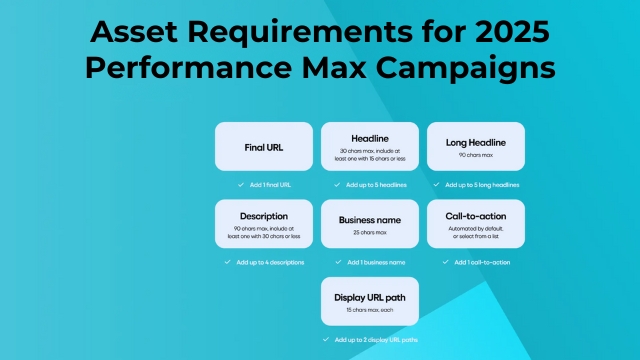
- Business Name
- Up to 20 Images (various sizes)
- Up to 5 Logos (including one square)
- Up to 5 Videos (under 10 seconds each)
- Up to 5 Headlines (30 characters each)
- 5 Long Headlines (90 characters each)
- 5 Descriptions (one with 60 characters, others with 90 characters)
- Call to Action Button
- Final URL
Add ad extensions such as sitelinks, promotions, pricing, contact numbers, structured snippets, and lead forms to enhance your ads. Comprehensive asset inclusion improves ad visibility and engagement.
Evaluating Campaign Performance in 2025
- Use Google Ads Insights for optimization suggestions and trend analysis.
- Run Experiments to compare Performance Max with other campaign types.
- Allow 6 Weeks before assessing campaign performance. Continuous evaluation ensures that your campaigns remain effective and competitive.
Benefits of Google Performance Max Campaigns
- For Users: Access to diverse formats (search, video, display), personalized product suggestions, and a seamless experience across platforms.
- For Marketers: Simplified campaign setup, cross-channel optimization, audience insights, and increased conversions with minimal manual intervention. Performance Max offers unparalleled efficiency, making it a vital tool for digital marketers in 2025.
Challenges of Performance Max Campaigns
- Limited control over ad combinations.
- Dependence on high-quality assets.
- Initial learning period for Google’s algorithm.
- High costs, especially when running alongside other campaigns. Understanding these challenges helps in developing strategies to mitigate them.
Conclusion
In 2025, automation in digital marketing is essential, not optional. Google Performance Max campaigns offer unparalleled efficiency and reach, making them a vital tool for modern marketers. Implement these best practices to maximize your ad performance and achieve your business goals. Staying updated with the latest trends and continuously optimizing your campaigns ensures sustained success.
Additional Resources
- Google Performance Max Course on Skillshop
- Solutions 8 Performance Max Guide
- Google’s Troubleshooting Guide
Stay ahead in 2025 by mastering Google Performance Max and transforming your digital marketing strategy today!
Frequently Asked Questions About Performance Max Best Practices
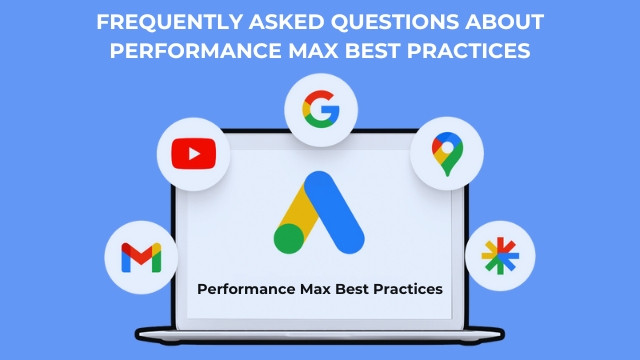
Q1. What is Google Performance Max and how does it differ from other Google Ads campaigns?
Answer: Google Performance Max is an AI-driven campaign that optimizes ads across all Google platforms, unlike traditional campaigns that focus on single channels.
Q2. How do I choose the best bidding strategy for Performance Max campaigns?
Answer: Use ‘Maximize Conversions’ for more conversions and ‘Maximize Conversion Value’ for prioritizing high-value conversions.
Q3. How long does it take to see results from a Performance Max campaign?
Answer: It typically takes at least 6 weeks for Google’s machine learning to fully optimize and show accurate results.
Q4. What types of assets are required for a Performance Max campaign?
Answer: Assets include business name, images, logos, short and long headlines, descriptions, short videos, and a final URL.
Q5. How do I monitor and improve my Performance Max campaign?
Answer: Leverage Google Ads Insights, update assets regularly, experiment with audience signals, and adjust budgets for optimal performance.
Author Profile

- Nitin Jain – C.E.O – India PR Distribution
- Nitin Jain is the founder and C.E.O of India PR Distribution – India’s top Press Release Distribution and PR Agency. Nitin has more than 20 years of experience in PR, Corporate Communications, Digital Marketing, Branding Strategy and Lead generation.
